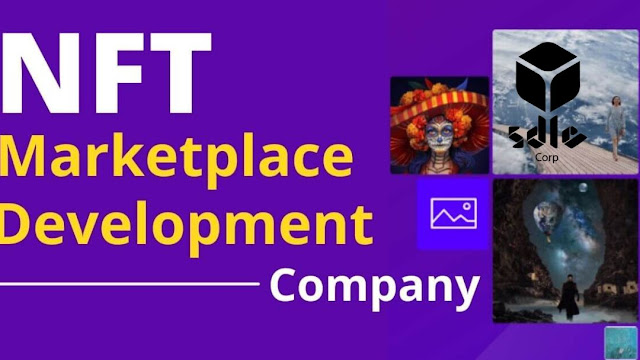How is an NFT Marketplace Developed?
Follow these steps if you are building an NFT marketplace for your business.
1. Focus On Your Niche
First, your NFT marketplace must fit your niche.
It could be digital artwork, game content, sports memorabilia, or a soundtrack.
Optimizing your NFT Marketplace Development company for your target audience will drive more traffic and grow your customer base.
2. Pick the Right Blockchain Network
Blockchains are distributed databases that store NFT transaction data.
NFT creators sell and earn royalties through platforms or marketplaces. Users buy, store, and resell NFTs on NFT platforms. Blockchains record all NFT marketplace transactions.
NFT Marketplace Development services need robust, secure, scalable, interconnected blockchains. So, first, choose a blockchain network for your NFT platform.
Before choosing a blockchain, consider these factors.
Transaction and NFT cost
Smart contracts' reliability
Blockchain fork-proof?
Quickness
3. Pick cutting-edge features
Optimize your NFT platform's features and functionality.
Your NFT marketplace's unique features can boost its value. However, when building your NFT marketplace, you must carefully consider its functionality.
Be specific about the project features you want to add. Use optional features such as 3D display, interoperability, and social media interaction.
4. Create a user-friendly interface
Your NFT Marketplace Development Company needs an engaging, simple interface. This ensures secure, bug-free NFT trading.
A good UI can boost your NFT marketplace's reputation.
Please keep it simple, user-friendly, and responsive while displaying features well.
First-time users can benefit from a simple UI and tutorials.
5. Build IPFS/DB Storage
Build an immutable, secure database.
This database stores sensitive user and admin data.
The database includes NFTs. IPFS stores and shares data in distributed files and databases.
IPFS let's NFTs represent data in any format and size in a safe, decentralized way and can last for a long time.
6. Integrate third-party services
Successful NFT marketplaces integrate payment gateways, crypto wallets, social media, and email.
Check if you only need these tools or if your platform needs more integration. Of course, everything depends on your business needs.
7. Build Smart Contracts
At this point, you should set up smart contracts that automatically start transactions and mint NFTs when the conditions for sales are met.
Smart contracts are needed for several reasons. First, they are backed by trustworthiness and reliability.
The smart contract you create must be aligned with the functions that your NFT marketplace intends to perform.
8. Test-and-deploy
Bugs and mistakes make it hard for people to use a platform. So, testing is a crucial phase that ensures a hassle-free user experience.
You can test different parameters on your NFT platform once it's ready. Quality testers can test your NFT marketplace's development usability, functionality, and other elements.
A thoroughly tested product eliminates real-time differences and loopholes.
Source URL:
https://medium.com/@sdlccorp683/how-is-an-nft-marketplace-developed-8d8c874211dc
.jpg)



Comments
Post a Comment